Brian Brenner, P.E., F.ASCE, is a professor of the practice at Tufts University and a principal engineer with Tighe & Bond in Westwood, Massachusetts. His collections of essays, Don’t Throw This Away!, Bridginess, and Too Much Information, published by ASCE Press, are available in the ASCE Library.
In his Civil Engineering Source series, More Water Under the Bridge, Brenner shares some thoughts each month about life as a civil engineer, considering bridge engineering from a unique, often comical point of view.
Before the Penobscot Narrows Bridge in Bucksport, Maine, there was the Waldo-Hancock Bridge.
Before the new Terenez Bridge in Crozon, Brittany, France, there was the old Terenez Bridge.
Both older bridges were historic suspension spans that deteriorated and needed replacing. Both were replaced by cable-stayed bridges. The old highway alignments in both Maine and France had curving approach roadways, with older bridges crossing their respective rivers in straight alignments perpendicular to the rivers.
Similar old bridges, similar design conditions for replacement bridges, same bridge type for replacement. So far, so good. But from there, the story diverges quite a bit.
In Maine, the Waldo Hancock Bridge was built in 1931. It carried U.S. Route 1 across the Penobscot River south of Bangor. At the crossing site, the river is more of a tidal estuary than a freshwater river. Tidal flows continue north about 25 miles from the river’s mouth at Penobscot Bay.
At the original crossing, Route 1 curved sharply to the east at the west approach. The turn onto the bridge was from a T-intersection. In the map below, the original alignment is described as “Old Route 1.”
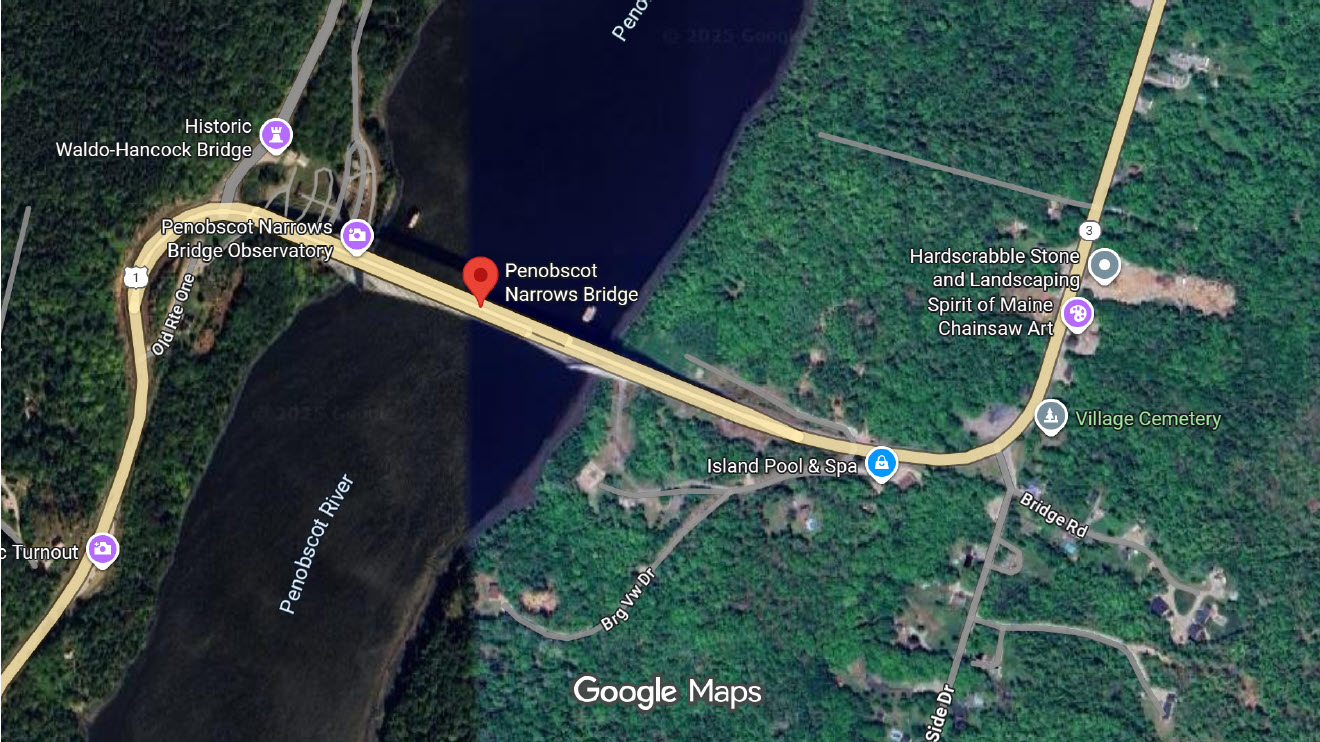
David Steinman was the bridge’s chief engineer. The structure included many of his typical design details, such as architecturally framed steel towers with spires.
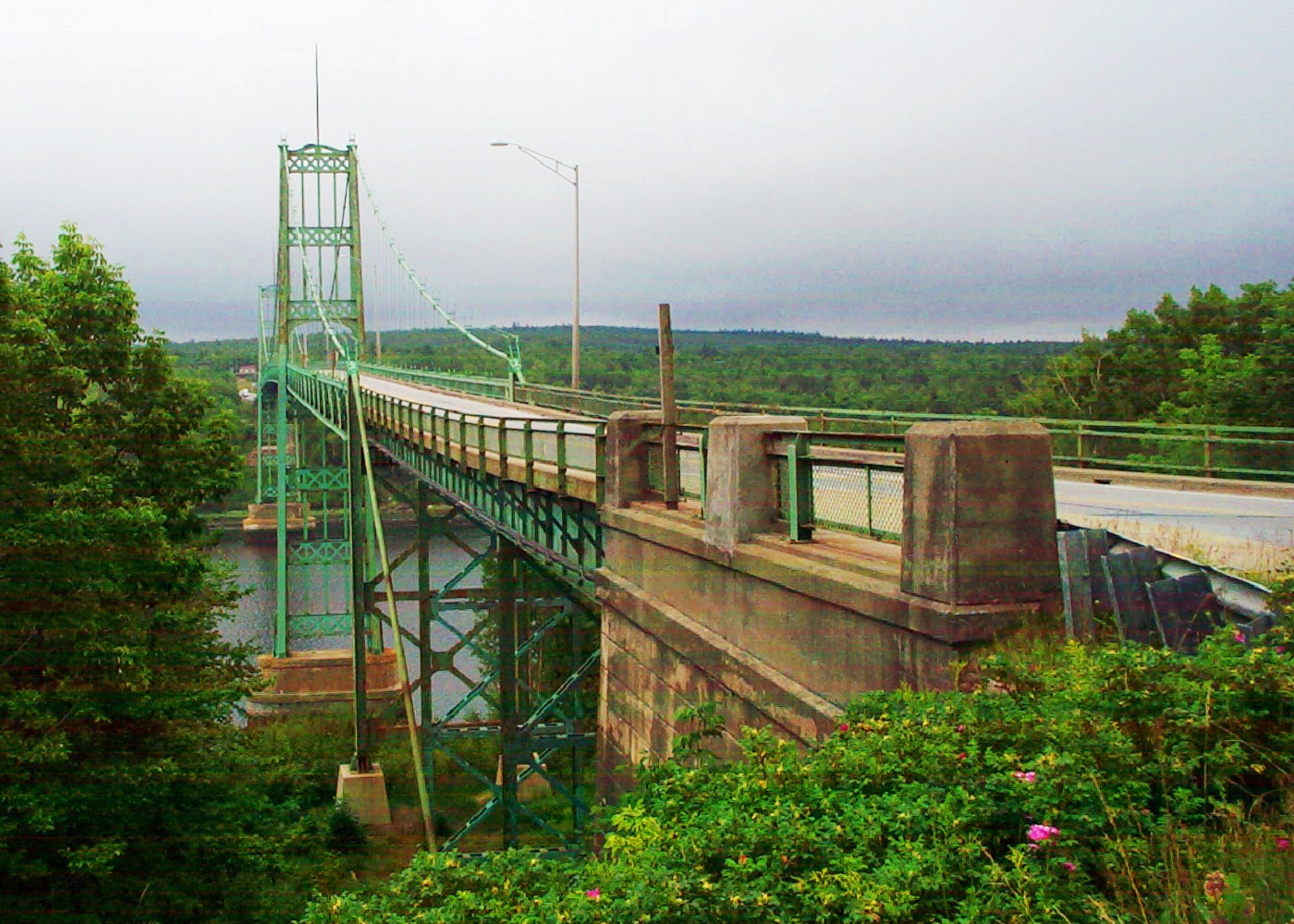 Centpacrr
Centpacrr
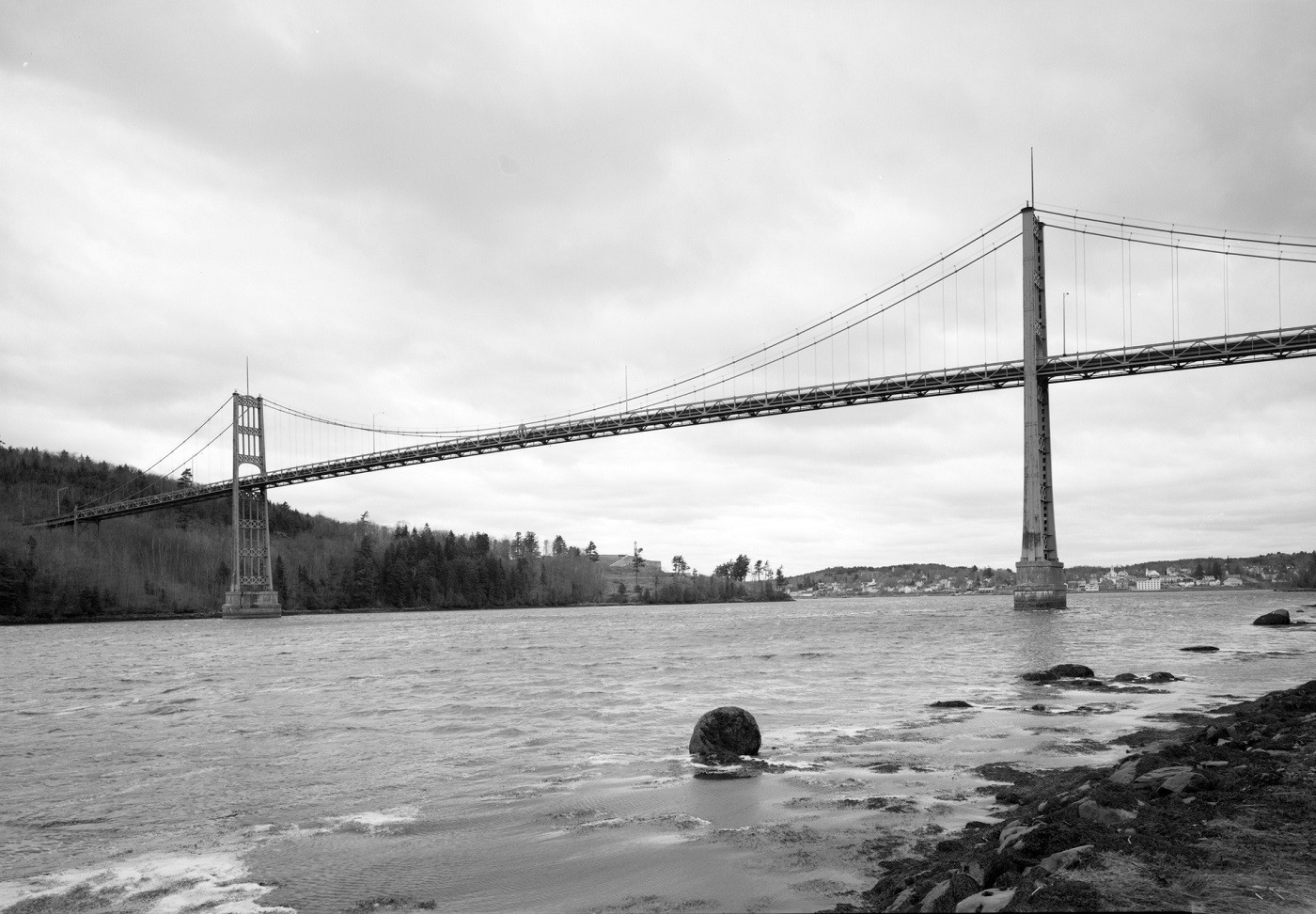 Jet Lowe
Jet Lowe The suspension bridge deteriorated over time and required frequent maintenance. Salt spray led to advanced steel rusting. In 2003, an inspection of the main cables found substantial rust, to the point where it was determined that the bridge needed to be replaced.
About 3,600 miles away, another old suspension bridge crossed the River Aulne in Rosnoën, Brittany, France. The original Terenez Bridge was built in 1925, but the span was destroyed during World War II, leaving just the towers. A new suspended span was built in 1951 by rebuilding and then reusing the damaged original towers. The main span was 892 feet long.
At the crossing site, the river is more of a tidal estuary than a freshwater river. Tidal flows continue east about 25 miles upstream from the river’s mouth.
Unfortunately, the concrete used for the towers experienced deterioration due to alkali-silica reactivity (ASR). Due to extensive ASR spalling, it was decided to replace the structure with a new bridge.
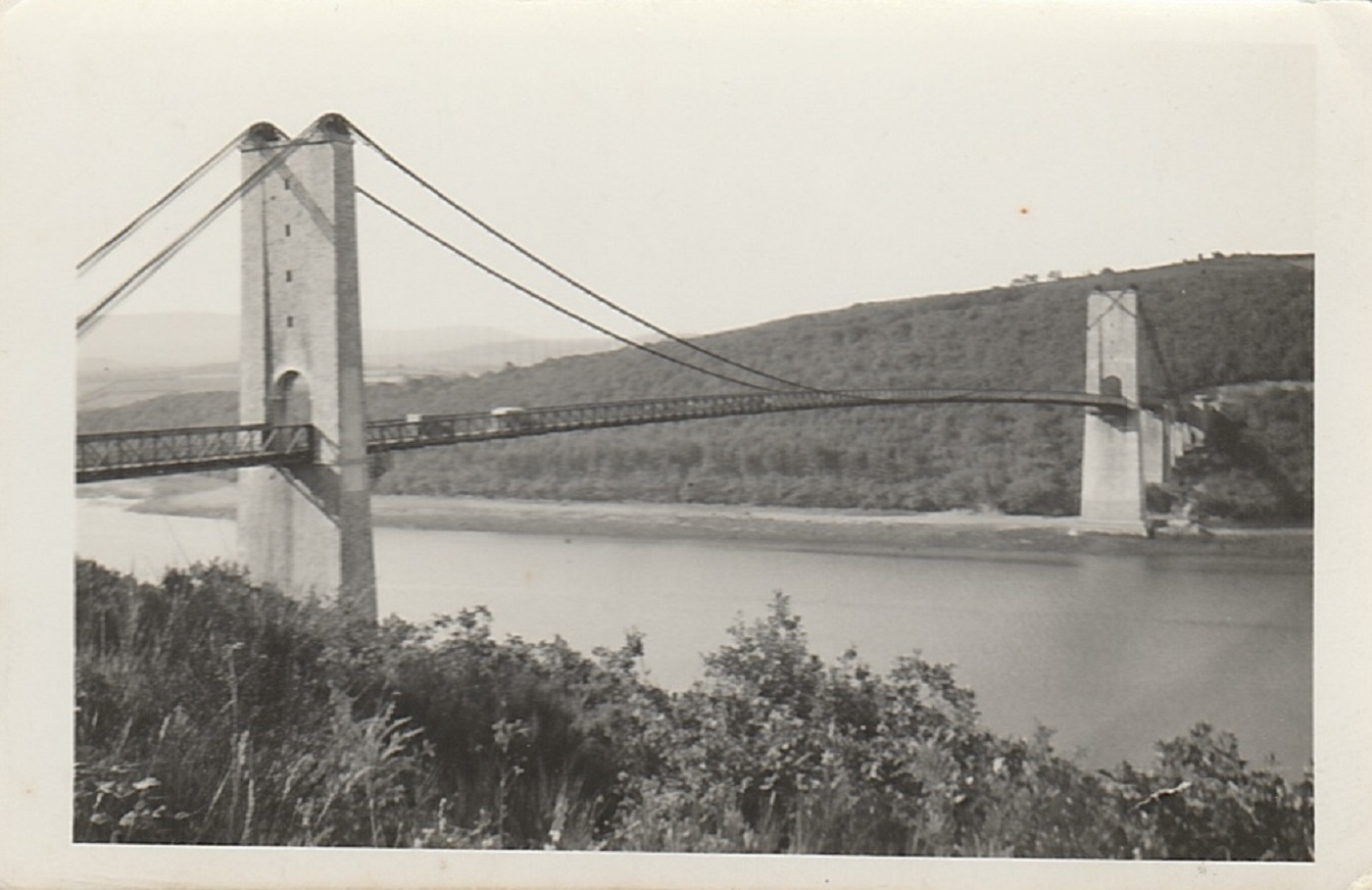 Matthieuqui
Matthieuqui The bridge carries Highway D791 across the river. At this site, the highway curves sharply on both banks. The original bridge had close-to-90 degree turns before the highway crossed.
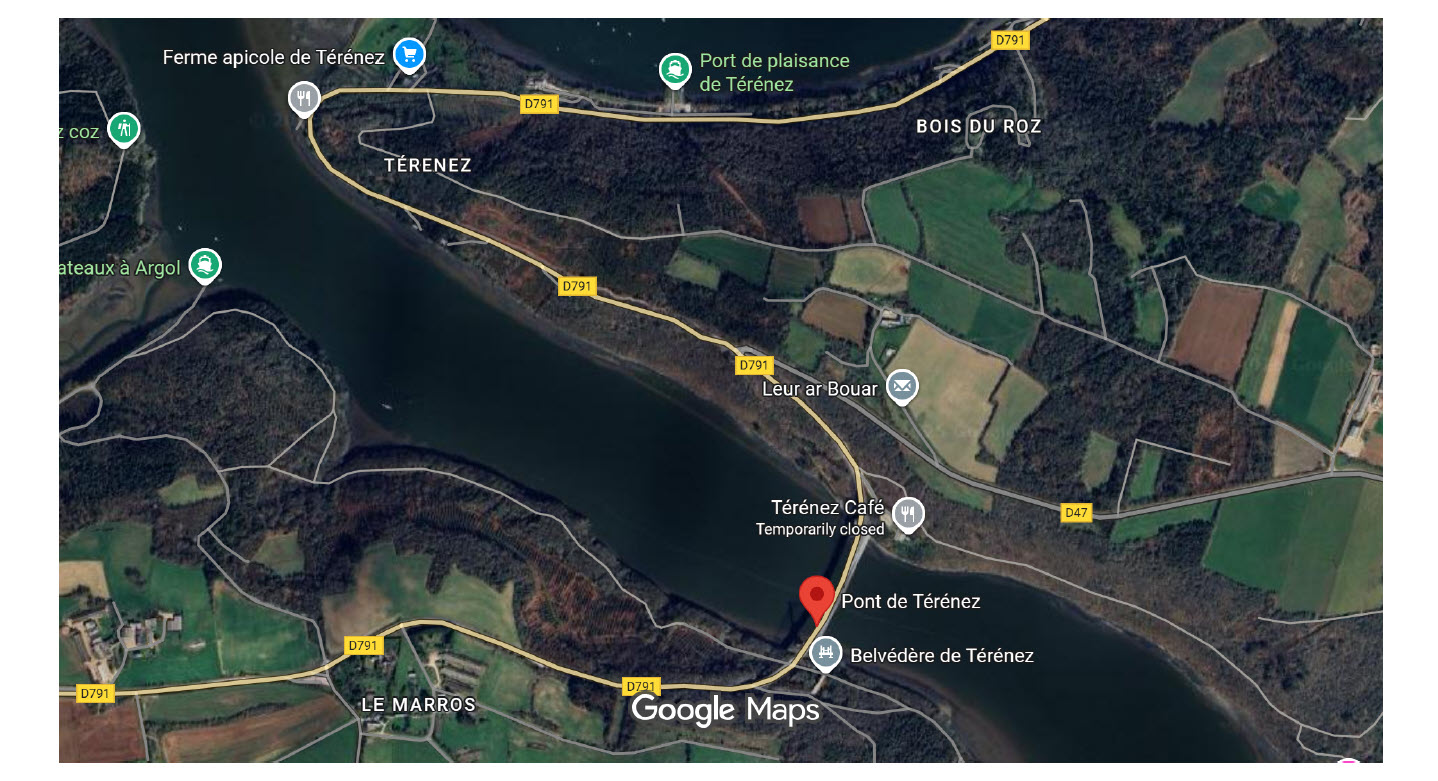
Let’s recap.
Two legacy suspension bridges crossing tidal estuaries with main spans of 800+ feet were subject to advanced deterioration. Engineers determined that both could no longer be rehabilitated. Both design teams selected cable-stayed bridges for the replacements. Both bridges had approach roadways with sharp curves leading onto them. The comparison is summarized in Table 1, below:

In Maine, the Waldo-Hancock Bridge was replaced by the Penobscot Narrows Bridge. The new bridge was built immediately south of the old bridge.
It has a main span of 1,161 feet and a slightly smaller vertical clearance, 134.5 feet. With a longer span than the original bridge, it was possible to avoid placing piers in the river. The traveled way is wider than the original bridge, with two 12-foot lanes, a 7-foot right shoulder and a 1-foot left shoulder on each side, and a center raised median of 14.3 feet where the fan pattern cable stays join the deck.
The original T-intersection on the west bank was replaced by a curve achieved by grading and excavating into the adjacent slope. Route 1 then crosses the river on a straight alignment.
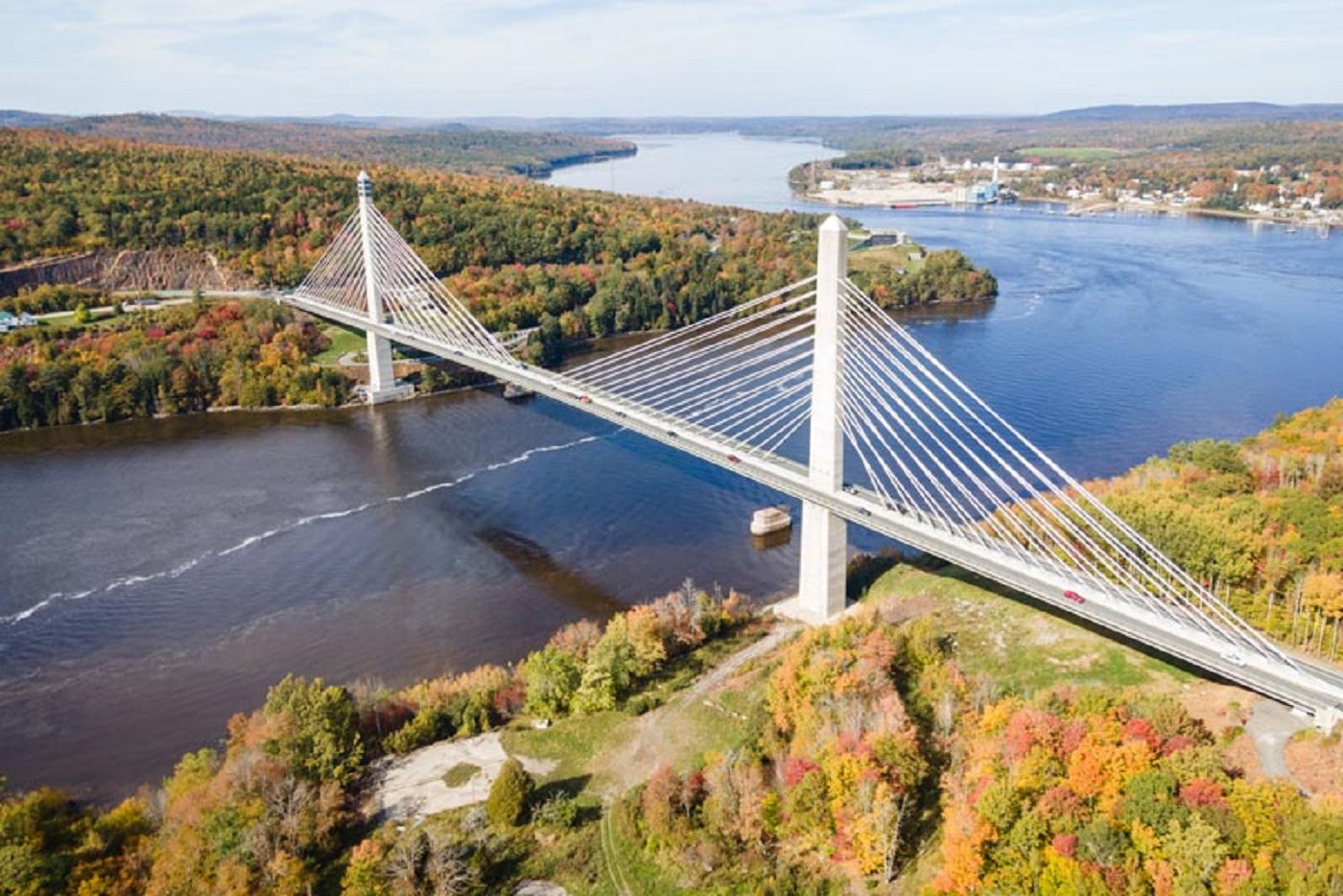 pentagoet.com
pentagoet.com The new bridge opened in December 2006, and the old one was then demolished starting in 2012. The new bridge includes an observatory built into the structure’s west pylon. It is not only a crossing but also a popular Maine tourist attraction. Visitors can ride an elevator to the top of the pylon and also visit adjacent Fort Knox.
The new bridge is beautifully detailed and provides a dramatic visual presence at the site. Immediately to the north, the river curves at the town of Bucksport (which can be seen in the photo above), and it is possible to visit a riverside restaurant for lunch and bridge viewing. The bridge is a good representative of “form follows function” design. The structure’s aesthetics follow from meeting functional design requirements.
The late David Steinman probably would have approved of this approach. In Bridges and Their Builders (1941), co-written by Steinman and Sarah Ruth Watson, and in his other writings, he discusses that bridge aesthetics are best achieved by structural design optimization and not added ornamentation or affectation.
The Narrows Bridge has a few architectural flourishes, such as the pyramid-shaped tower tops. But in general, its beautiful appearance is provided by the successful application of a structural type that efficiently meets functional requirements for span and capacity. A quibble is that the two pylons are not symmetric. The more massive west pylon provides extra space for the elevator and observation deck on top.
In Brittany, the old Terenez Bridge was replaced by the new Terenez Bridge. The new bridge was built just to the east of the old one, with a cable-stayed main span of 935 feet. Instead of a straight alignment, designers chose to smooth out the crossing curves by aligning the roadway on a long curve that is continued across the new bridge. This approach improved highway safety by removing the old 90-degree curves at the bridge abutments. The curve fits nicely into approaches on both sides by mostly working with existing steep slopes instead of further cutting into them.
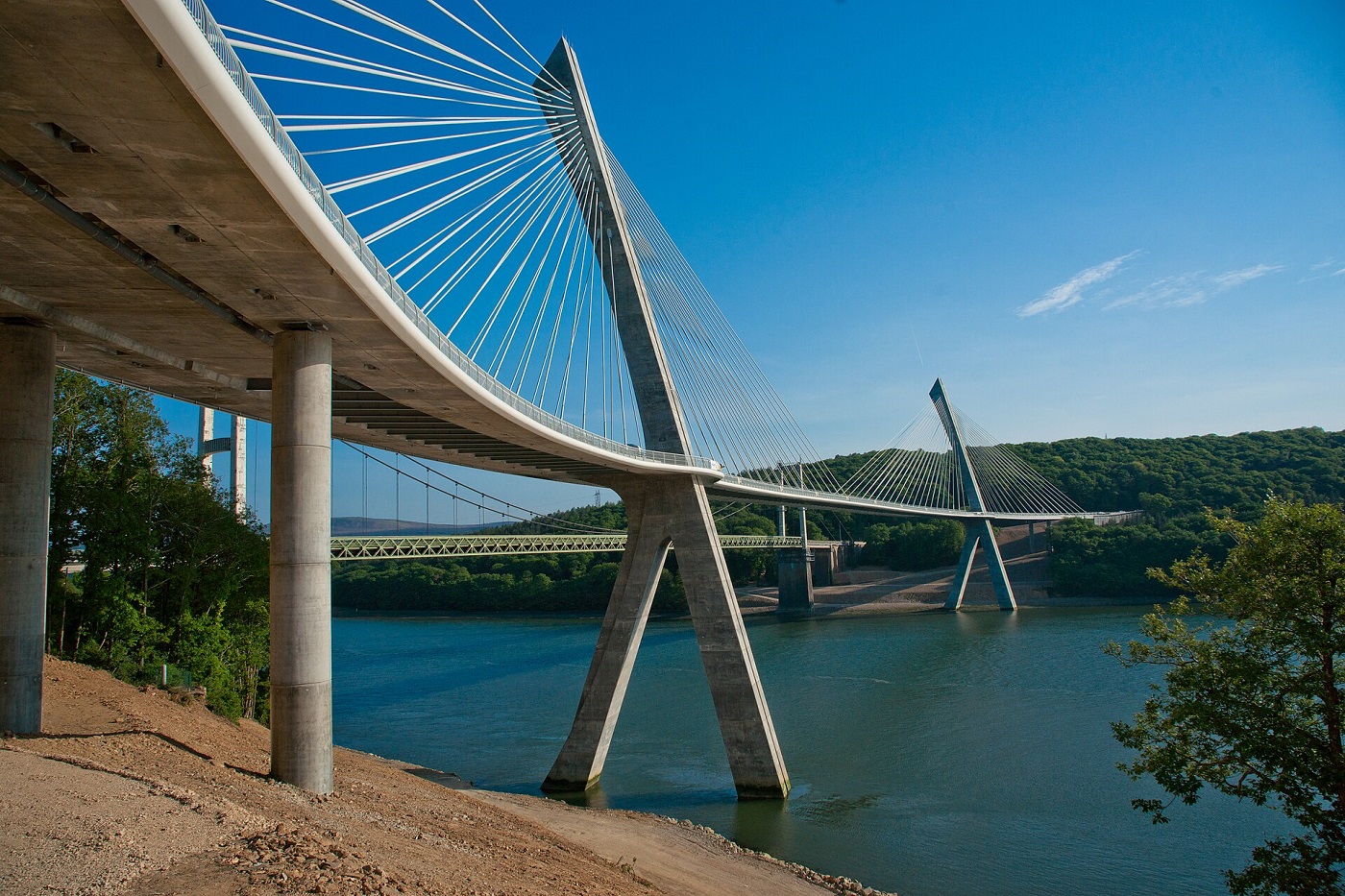 Ludovic Péron
Ludovic Péron The functional requirements of choosing to curve rather than cross the river in a straight line led to design challenges for the bridge structure. The curving bridge alignment imposed additional bending moments and forces in the superstructure not found in a straight cable-stayed bridge. The bridge’s towers have a unique shape. The towers are tilted and have a pair of legs to help resist additional tensile forces from the cables slanting out of plane. The junction of the pylon section above deck to the legs below has a thicker concrete section reinforced to resist the large moments at the junction point. Unlike the old suspension bridge, which spanned from shore to shore with no piers in the water, both towers are founded in the river with two concrete legs at an angle. This is to help satisfy the curved roadway design and bridge structural requirements.
The resulting bridge is beautiful and unusual. The leaning towers have a unique shape. In contrast to the Penobscot Narrows Bridge design, which can be characterized as a “form follows function” approach, the new Terenez Bridge design has an aspect of “function follows form.” There were potentially other solutions to smooth the roadway curve without the need for a fully curved cable-stayed structure. For example, a similar highway issue at the Maine crossing was resolved by cutting into the slope with a new curve and keeping a straight bridge alignment. But the Terenez Bridge designers settled on a curved highway alignment that avoided substantial cuts in the slopes but imposed challenging design constraints for the new bridge.
Back in the day, old suspension bridges were designed by slide rules and approximate analytical models without help from 3D finite elements and full geometric visualization. New computer software has facilitated development of new structural forms such as the innovative new Terenez Bridge. The old ways characterized by Steinman’s lean depression-era designs resulted in beautiful “less is more” spans with a few architectural flourishes. Some current designs as exemplified by the Terenez Bridge are not as limited by old technological constraints and are able to use daring shapes and structural connections. The results are often different and spectacular. But site conditions, at least as traditionally understood, do not necessarily require the added complexity.
References
“Gallic curves: the Térénez Bridge, France” The New Civil Engineer, Aug. 11, 2011
accessed Oct. 11, 2025
“Design of the Térénez curved cable-stayed bridge”
accessed Oct. 11, 2025
Steinman, David B., & Watson, Sara Ruth. Bridges and Their Builders. New York: G.P. Putnam’s Sons, 1941.
“Pont de Terenez” in Structures and Spans, Jan. 3, 2012
accessed Oct. 11, 2025
“Waldo-Hancock Bridge Replacement Project”
accessed Oct 11, 2025
“Waldo-Hancock Suspension Bridge”
accessed Oct 11, 2025



